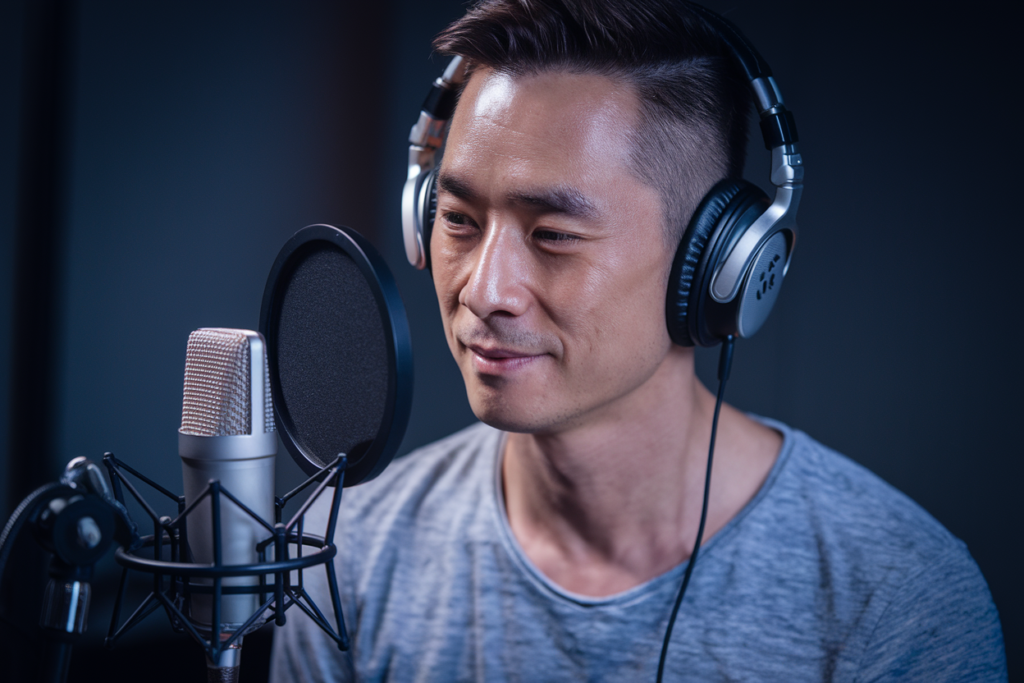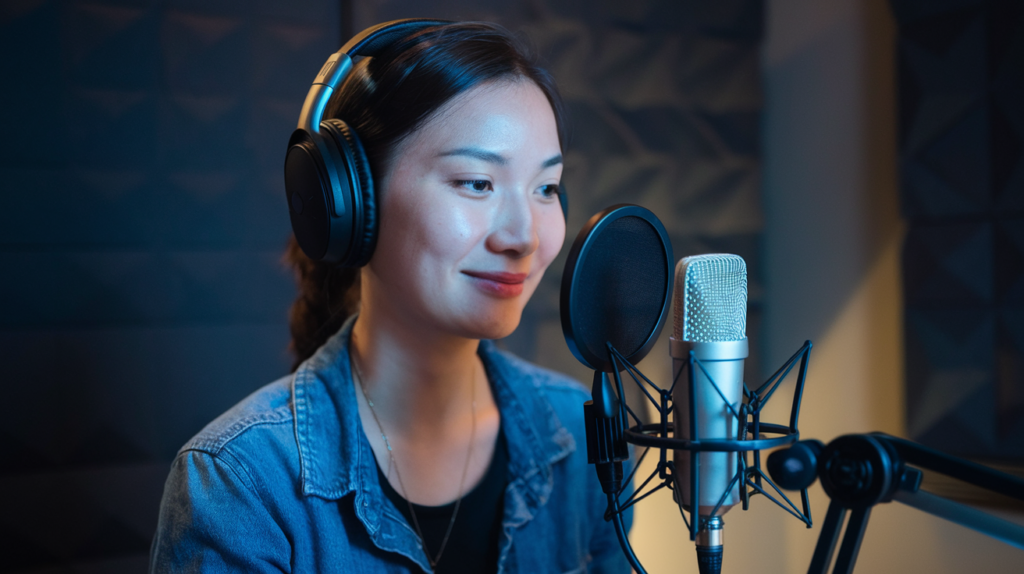Key Takeaways
- Diverse Dialects: China boasts over 300 dialects, each with unique cultural nuances crucial for effective voiceovers.
- Dialect Characteristics: Understanding the traits of major dialects—Mandarin, Cantonese, Wu, Min, and Hakka—enables creators to select suitable voice talent for their projects.
- Cultural Significance: Dialects convey local customs and values, enhancing authenticity and relatability in storytelling.
- Audience Connection: Using specific dialects can create strong emotional ties with listeners, making narratives more engaging and immersive.
- Challenges in Implementation: Sourcing qualified voice artists familiar with various dialects can be difficult; relying solely on Mandarin may alienate regional audiences.
- Future Trends: Technological advancements and globalization are shaping the future of Chinese voiceovers, increasing demand for diverse and culturally relevant performances.
Ever wondered how dialects shape the world of Chinese voiceovers? With over 300 distinct dialects, China’s rich linguistic landscape can make or break a project. Whether you’re a filmmaker, game developer, or content creator, understanding the impact of these dialects is crucial for connecting with your audience.
Understanding Chinese Dialects
China’s rich tapestry of dialects plays a crucial role in voiceovers. With over 300 distinct dialects, each carries unique cultural nuances that resonate deeply with audiences.
Major Chinese Dialects
Mandarin is the most widely spoken dialect, forming the basis for official communication and media. Cantonese follows closely, particularly prevalent in Hong Kong and southern China, known for its vibrant tonal range. Wu includes Shanghainese and has a softer sound profile. Min encompasses several varieties like Hokkien and Teochew, often used in Taiwan and parts of Southeast Asia. Lastly, Hakka features prominently among diaspora communities across the globe.
Characteristics of Each Dialect
Each dialect showcases distinctive characteristics that influence voiceovers:
- Mandarin: Clear pronunciation; ideal for formal contexts.
- Cantonese: Rich in tones; adds emotional depth to character-driven narratives.
- Wu: Soft sounds; suitable for intimate storytelling or artistic expressions.
- Min: Varied intonations; effective for regional projects with local flavor.
- Hakka: Unique phonetics; evokes nostalgia among Hakka speakers.
Understanding these traits helps you choose the right voice talent who can capture the essence of your message while connecting authentically with your audience.
The Role of Dialects in Voiceovers
Dialects play a crucial role in Chinese voiceovers, influencing how stories are told and received. Understanding these dialects enhances the authenticity of your projects.
Cultural Significance
Cultural nuances embedded in dialects shape how messages resonate with audiences. Each dialect carries its own history and traditions, reflecting local customs and values. For instance, Mandarin might be preferred for formal presentations due to its clear pronunciation, while Cantonese adds emotional depth through its rich tonal range. Choosing the right voice talent who understands these cultural elements ensures that your content feels relatable and genuine.
Audience Reception
Audience reception hinges on linguistic familiarity. When you use a specific dialect, it can evoke strong connections among listeners who identify with it. A Wu voice actor’s softer sounds may create an intimate atmosphere, perfect for storytelling that requires warmth. On the other hand, Min’s varied intonations can engage regional audiences effectively by tapping into their unique experiences. Selecting a trained voice over artist familiar with these subtleties makes all the difference in delivering compelling narratives that resonate deeply with viewers or listeners.
Case Studies of Dialect Use in Voiceovers
Exploring real-world examples shows how dialects significantly impact voiceovers in Chinese media. These case studies illustrate the effectiveness of dialect selection and its influence on audience engagement.
Successful Implementations
One notable instance involves a popular animated series that utilized Cantonese voice actors for the Hong Kong market. The choice enriched the storytelling, allowing characters to resonate deeply with local viewers. The emotional depth Cantonese brings enhances scene dynamics, showcasing how region-specific dialects elevate narrative quality.
Another successful implementation features a video game set in rural China, which employed Hakka voiceover talent. This decision not only added authenticity to character dialogues but also connected players to cultural narratives they might otherwise overlook. Utilizing dialects effectively fosters immersive experiences that attract diverse audiences.
Challenges Faced
However, integrating dialects isn’t without challenges. One significant hurdle is finding qualified voice artists who can deliver authentic performances while capturing nuanced regional accents. Many projects face difficulties sourcing talent familiar with less widely spoken dialects like Min or Wu, limiting options for creators seeking genuine representation.
Additionally, there’s often a perception among some producers that Mandarin alone suffices for all audiences. This oversimplification risks alienating regional listeners who prefer content reflecting their linguistic backgrounds. Balancing creative vision and cultural accuracy remains essential when choosing voice actors for specific projects.
Understanding these nuances helps create compelling content that resonates with your target audience while maintaining authenticity across various platforms.
Future Trends in Chinese Voiceovers
The landscape of Chinese voiceovers is evolving rapidly, shaped by advancements in technology and the forces of globalization. Understanding these trends can help you stay ahead in this dynamic field.
Technology and Dialect Adaptation
Technology plays a pivotal role in adapting dialects for voiceovers. Tools like AI-driven speech synthesis and machine learning enhance the ability to mimic various dialects accurately. These innovations allow voice artists to create more authentic performances that resonate with specific audiences. For instance, software can analyze regional nuances, helping voice actors capture the subtleties unique to each dialect. This level of precision opens doors for creators who want their content to connect deeply with viewers or listeners across different cultural backgrounds.
With these tools at your disposal, it’s crucial to consider how they can support your projects. By leveraging advanced technology, you can ensure that your chosen voice talent embodies the characteristics of local dialects—something that elevates storytelling quality significantly.
Globalization and Its Effects
Globalization has also influenced the demand for diverse voices in Chinese media. As content reaches international markets, there’s a growing need for localized versions that reflect cultural nuances. Using distinct dialects not only enhances authenticity but also helps bridge connections between characters and audiences worldwide.
You might wonder how this affects hiring decisions when selecting voice over talent. The answer lies in recognizing the importance of culturally relevant performances. Audiences expect relatable narratives; thus, employing native speakers familiar with local customs fosters deeper engagement.
As technology advances and globalization continues reshaping media consumption patterns, staying informed about these trends ensures you make strategic choices when producing content tailored for diverse audiences through impactful voiceovers.
Conclusion
Understanding the impact of dialects in Chinese voiceovers is crucial for anyone involved in content creation. By choosing the right dialect, you can enhance authenticity and emotional resonance in your projects. It’s about more than just language; it’s about connecting culturally with your audience.
As technology continues to evolve, leveraging advancements like AI will only amplify the importance of these dialects. Keeping an eye on future trends will help you create impactful narratives that truly resonate with viewers or listeners. Embracing this complexity not only enriches storytelling but also ensures your work stands out in a competitive landscape.
Frequently Asked Questions
Why are dialects important in Chinese voiceovers?
Dialects are crucial in Chinese voiceovers because they help filmmakers and content creators connect authentically with their audiences. Each of China’s over 300 dialects carries unique cultural significance, which influences how stories resonate. Using the appropriate dialect enhances emotional depth and makes narratives more relatable.
What are the major Chinese dialects mentioned?
The major Chinese dialects discussed include Mandarin, Cantonese, Wu, Min, and Hakka. Mandarin is known for its clarity and formality; Cantonese adds emotional richness; Wu offers softer sounds for intimacy; Min features varied intonations for regional appeal; and Hakka evokes nostalgia among its speakers.
How does dialect selection impact audience reception?
Dialect selection significantly impacts audience reception by fostering stronger connections between the content and viewers. For example, using Cantonese can enhance emotional engagement in Hong Kong markets, while employing Hakka may resonate deeply with players in rural contexts due to its cultural authenticity.
What challenges exist in integrating less common dialects?
Integrating less common dialects like Min or Wu presents challenges such as sourcing qualified voice talent who are skilled in these specific pronunciations. Additionally, some producers mistakenly believe that Mandarin can suit all audiences, potentially compromising the authenticity of their projects.
How is technology influencing future trends in Chinese voiceovers?
Technology is transforming Chinese voiceovers through advancements in AI-driven speech synthesis and machine learning. These innovations enable more authentic performances tailored to specific audiences by simulating various dialect characteristics while maintaining quality storytelling across platforms.







